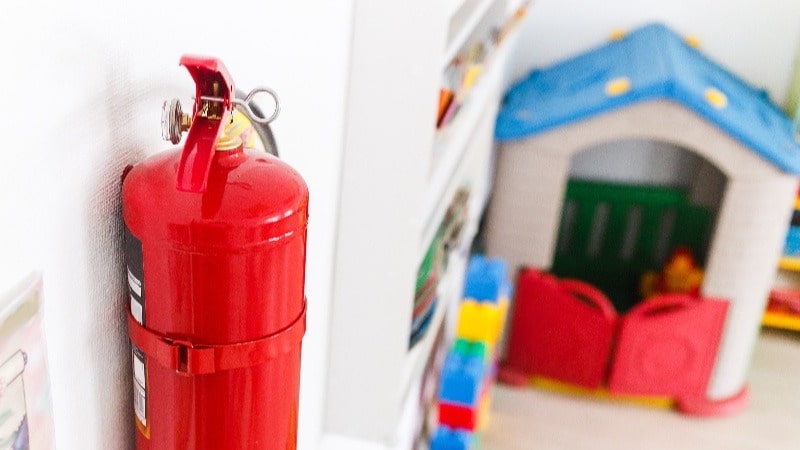Making the Switch: Vendor Transition Guide
Switching fire and security vendors feels risky. Even if your current provider isn't meeting your needs, the thought of transitioning systems and...
 |
Fire protection professionals committed to safeguarding lives, property, and peace of mind. |
 |
Solutions designed for your property type, from multi-family housing to healthcare facilities to retail spaces. |

|
Fire alarm, area of refuge, camera, and card access monitoring services. |
 |
Clear communication and instant response when every second counts. |
 |
From kitchens to server rooms, the right protection for every space. |
 |
Keep your primary defense system ready and reliable. |

|
Manage all your properties' access from one simple platform. |
 |
Monitor multiple properties in real time from anywhere, at any time. |

|
Document upcoming maintenance appointments and improve your proactive budget planning. |
 |
Fire Extinguisher Maintenance Checklist Learn the requirements for testing extinguishers monthly, annually, and beyond. |

|
Track all your inspection deadlines in one place. |
 |
Kitchen Hood Inspection Checklist Ensure your kitchen hoods are safe and compliant. Download a complete list of testing requirements. |

|
Guide to Fire & Security Monitoring Your complete property protection handbook in practical terms. |

|
Running a food truck takes work—this guide gives you the tools to keep it safe and up to code. |
 |
Comprehensive Guide to NFPA 13 and NFPA 25 Fire Sprinkler Systems Navigate sprinkler system requirements with confidence using our straightforward guide to codes and maintenance. |

|
Get your essential compliance guide. |
 |
When reliability matters across 18 restaurants, micromanagement doesn't. |
3 min read
Brothers Fire & Security : August 22, 2025

On any given week in the United States, over 11 million children younger than age five are in some type of childcare arrangement. On average, these children can be spending anywhere from 15-36 hours a week in childcare. It’s their second home, so it must be protected from all harm, which includes fire and smoke.
Whether preparing for a new school year or routine safety reviews, keeping your fire safety systems current is always important.
No matter the number of children and/or sites, daycares must meet minimum safety requirements as mandated by the National Fire Protection Association (NFPA) code and state laws. Among them are fire extinguishers.
Fire extinguishers are your basic fire safety tool, yet they go a long way to prevent greater loss if a fire does occur. Recent data shows that cooking causes nearly half of all residential building fires, with heating and electrical issues causing most others.. That’s why it is so important to have a mounted fire extinguisher accessible and located in conspicuous locations where they are immediately available for use.
Safety codes require at least one portable fire extinguisher within 75 feet of occupied areas, plus laundry rooms, boiler and furnace rooms, mechanical and electrical rooms, garages, kitchens, janitor closets, trash collection rooms, storage rooms, and similar areas.
It seems obvious, but you should never need to travel to another floor to get an extinguisher!
There are three main types of fire extinguishers: water, chemical, and carbon dioxide. Depending on the services offered at a daycare or preschool, many types might be necessary to have on hand. A fire sprinkler system is an additional mode to extinguish a fire, and is required to be installed in daycares/preschools that share another occupancy type. The following chart expands on the types of extinguishers used per fire class.
|
Class of Fire |
Type of Fire Extinguisher to Use |
|
Class A: The fuel source involves everyday combustible materials such as wood, paper, trash, plastics, and vegetation. |
|
|
Class B: These fires comprise flammable liquids like oil, grease, gasoline, and paint. |
|
|
Class C: Appear on energized electrical equipment like electrical wiring |
|
|
Class D: Involve combustible metals like zirconium, titanium, magnesium, and potassium. |
|
|
Class K: Cover cooking oils and fats |
|
Class A and Class K extinguishers are the most likely to be used in a daycare setting. However, fire extinguisher requirements and types mean nothing if no one knows how to properly and effectively use one.
OSHA requires fire extinguisher training for all employees at least once a year. Proper training needs to be more than a five-minute demonstration by a skilled trainer. Not everyone is mechanically minded, so training needs to take a hospitable, straightforward approach. Employers need to consider the number of people who need training, properly use group training time and the expense of in-person training.
Regardless of the instruction method, training covers fire safety information outside of using an extinguisher. Training can include;
Our walk-in service center welcomes daycare providers who need inspections or quick answers about extinguisher selection, placement, or basic maintenance questions.
Having extinguishers isn't enough.They need regular care to work properly:
For busy daycare administrators, coordinating these inspections with other fire safety requirements can help simplify your safety compliance efforts.
Fire safety in daycares creates an environment where children can learn and play safely. When you have the right extinguishers in the right places, properly maintained and with staff who know how to use them, you've built multiple layers of protection.
Make fire safety part of your routine rather than something you think about only during inspections. Regular maintenance, ongoing training, and staying current with safety standards help ensure your daycare is prepared for any situation.

Switching fire and security vendors feels risky. Even if your current provider isn't meeting your needs, the thought of transitioning systems and...

Your fire alarm shows a trouble signal. Last week's sprinkler inspection never happened, and despite three calls and multiple messages, your vendor...

Winter weather and holiday demands can make managing multi-location security a nightmare. Fall is your best window to upgrade security systems,...